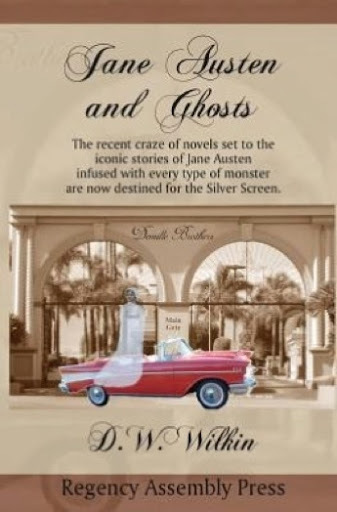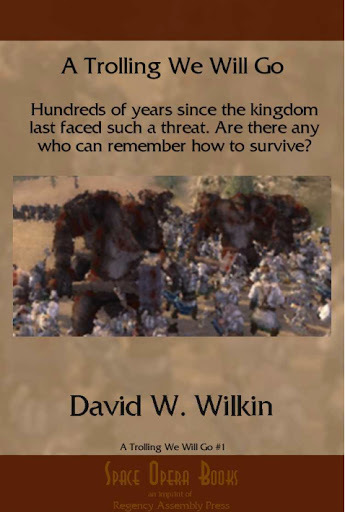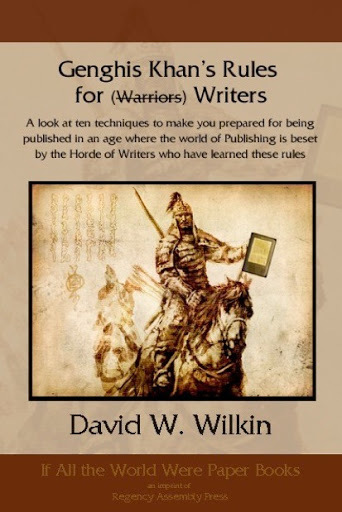D.W. Wilkin's Blog, page 28
September 11, 2016
Regency Personalities Series-Field Marshal John Griffin Griffin 4th Baron Howard de Walden
Regency Personalities Series
In my attempts to provide us with the details of the Regency, today I continue with one of the many period notables.
Field Marshal John Griffin Griffin 4th Baron Howard de Walden, 1st Baron Braybrooke
13 March 1719 – 25 May 1797
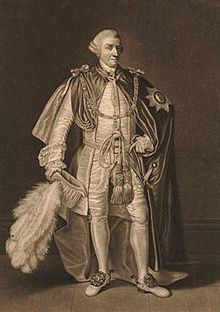
John Griffin
Field Marshal John Griffin Griffin 4th Baron Howard de Walden was born the son of William Whitwell and Anne Whitwell (née Griffin, sister and sole heir of Edward Griffin, 3rd Baron Griffin of Braybrooke and granddaughter of James Howard, 3rd Earl of Suffolk and Baron Howard de Walden), Whitwell was educated at Winchester College and commissioned as an ensign in the 3rd regiment of Foot Guards and lieutenant in the Army in 1739. He served with the Pragmatic Army in the Netherlands and Germany during the War of the Austrian Succession and was promoted to captain in his regiment and lieutenant colonel in the Army in March 1744.
Whitwell’s aunt Elizabeth, Countess of Portsmouth agreed to leave him her interest in Audley End House if he changed his surname to Griffin: he did so in 1749, by Act of Parliament, becoming John Griffin Griffin. He became Member of Parliament for Andover in November 1749. Promoted to colonel on 29 May 1756 he became first major of his regiment on 9 May 1758. Promoted to major-general on 12 September 1759, he became colonel of the 50th Regiment of Foot in October 1759 and colonel of the 33rd Regiment of Foot in May 1760.
Griffin commanded a brigade of at least four battalions at the Battle of Corbach in July 1760 during the Seven Years’ War. At Corbach, following the arrival of French reinforcements from Frankenberg, the allied army was forced to withdraw. He also commanded a brigade at the Battle of Warburg later that month where the allied army were more successful. He was present and wounded at the Battle of Kloster Kampen in October 1760.
Griffin was appointed Knight Companion of the Order of the Bath on 11 April 1761 and inherited Audley End House outright when his aunt died in 1762. Promoted to lieutenant-general on 26 March 1765, he became colonel of the 1st Troop, Horse Grenadier Guards in March 1766 and was promoted to full general on 14 April 1778. During the political crisis in the early 1780s at the end of the American Revolutionary War he was generally a supporter of William Pitt the Younger.
Pitt arranged for the Barony of Howard de Walden to be called out of abeyance in Griffin’s favour, so elevating him to the House of Lords, on 3 August 1784 and for Griffin to be appointed Lord Lieutenant of Essex in November 1784. Griffin became colonel of the 4th Dragoons in March 1788, was additionally created 1st Baron Braybrooke on 30 August 1788 and was promoted to field marshal on 30 July 1796. He died at his home, Audley End House, on 25 May 1797 and was buried in the churchyard of St Mary the Virgin church at Saffron Walden.
In 1749 he married Anna Maria Schutz and in 1765 he married Catherine Clayton; there were no children from either marriage.


RAP (Regency Assembly Press) in need of Beta-Readers
Regency Assembly
Press
is looking for
Beta Readers
One novel is ready for Beta Reading
We have a continuation of Pride and Prejudice with Ms Caroline Bingley and her fortune at stake:
Do we think that Mr Hurst married his Bingley Bride without incentive? It is highly probable that Caroline Bingley, even though she has a sharp, acerbic tongue, still is in possession of a fortune and an astute fortune hunter who deciphers this may soon be on the road to, if not a happy marriage, one with financial security.
Please respond or send an email if you are interested


Jane Austen Fans Rejoice, Jane is BACKKKK… Jane Austen and Ghosts
Special Sale Price!
Jane Austen and Ghosts.
Not only do I write Regency and Romance, but this can take a humorous turn. Some years back, I am sure readers of this blog will be aware that some writers began to take great liberty with Jane Austen and her works. Pride and Prejudice being liberally rewritten with the inclusion of zombies.
Then other books appeared with sea monsters, and werewolves and vampires. President Lincoln has even made it to the big screen where he is intent on sending foul creatures to hell. It occurred to me, even before I read any of this literature, that Jane would probably not appreciate what had been done to her classic piece.
That the tales and her life have become visual spectacles that we enjoy she might not like either, but is perhaps resigned to. That zombies, ghosts and vampires are now used to follow her own plot lines would I think, have her turning over in her grave. Jane Austen and Ghosts is my take on that.
It is now available in a variety of formats. For a limited time it has been reduced to $2.99 for your eReaders and $8.99 for paperback you can get this Jane Austen adventure.
Barnes and Noble for your Nook
and in Paperback
In the world of moviemaking, nothing is as golden as rebooting a classic tale that has made fortunes every time before when it has been adapted for the silver screen.
Certainly any work by Jane Austen made into a movie will not only be bankable, but also considered a work of art. That is of course until the current wave of adaptations that unite her classic stories with all the elements of the afterlife is attempted to be created.
That these have found success in the marketplace amongst booklovers may not be quite understood by those who make movies. But that they are a success is understood and a reason to make them into movies.
All that being said, perhaps it would also be fair to say that the very proper Jane, were she present to have anything to say about it, would not be pleased. Of course she has been away from this Earth for nearly 200 hundred years.
But does that mean were she upset enough, she wouldn’t come back?
Feedback
If you have any commentary, thoughts, ideas about the book (especially if you buy it, read it and like it
September 10, 2016
Regency Personalities Series-Robert Jocelyn 2nd Earl of Roden
Regency Personalities Series
In my attempts to provide us with the details of the Regency, today I continue with one of the many period notables.
Robert Jocelyn 2nd Earl of Roden
26 October 1756 – 29 June 1820
Robert Jocelyn 2nd Earl of Roden was an Irish peer, soldier and politician. He was styled The Honourable from his birth to 1771, and then Viscount Jocelyn from 1771 to 1797. He was the eldest son of the 1st Earl of Roden and Lady Anne Hamilton, daughter of James Hamilton, 1st Earl of Clanbrassil.
He was a professional soldier, and the company of dragoons he commanded, nicknamed “the Foxhunters”, gained much notoriety during the Irish Rebellion of 1798. In particular they played a leading role in the Gibbet Rath massacre at the Curragh of Kildare on 29 May 1798, where 350-500 insurgents, who had surrendered, were killed in cold blood. In defence of Roden it can be said that he acted on the orders of his superior officer, General Duff, and the action was widely condoned at the time. In September his dragoons played a crucial part in the final defeat of the invading French army at the Battle of Ballinamuck: Lord Roden accepted the surrender of General Humbert.
He became Earl of Roden in 1797 after the death of his father Robert Jocelyn, 1st Earl of Roden and was appointed a Knight of the Order of St Patrick on 13 November 1806. Jocelyn represented Maryborough in the Irish House of Commons between 1776 and 1778. Between 1783 and 1797, he sat as Member of Parliament for Dundalk. He turned down a Marquisate due to the lack of his fortune which was needed to uphold this position.
He was appointed Custos Rotulorum of Louth for life in 1820.
He married:
Frances Theodosia Bligh on 5 February 1788 at St Andrew’s Church, Dublin with issue:
Robert Jocelyn (born 27 Oct 1788)
James Bligh Jocelyn (died Jul 1812)
Thomas Jocelyn (died Feb 1816)
George Jocelyn
Frances Theodosia Jocelyn (1795-May 1820)
Anne Jocelyn (Died Oct 1822)
Juliana-Anne Orde on 1808 with issue:
1 John Jocelyn
Augustus George Frederick Jocelyn (1811–1887)


Space Opera Books Presents A Trolling We Will Go (Book #1)
A Trolling We Will Go
Not only do I write Regency and Romance, but I also have delved into Fantasy.
The Trolling series, (the first three are in print) is the story of a man, Humphrey. We meet him as he has left youth and become a man with a man’s responsibilities. We follow him in a series of stories that encompass the stages of life.
We see him when he starts his family, when he has older sons and the father son dynamic is tested. We see him when his children begin to marry and have children, and at the end of his life when those he has loved, and those who were his friends proceed him over the threshold into death.
All this while he serves a kingdom troubled by monsters. Troubles that he and his friends will learn to deal with and rectify.
It is now available in a variety of formats. For $.99 you can get this fantasy adventure.
Barnes and Noble for your Nook
The Valley Kingdom of Torahn had been at peace for fifty years since the Council of Twenty-One saw fit to dispense with their royal family.
The only Kingdom without a King on the west side of the continent. But late last year, something caused the Goblins in the Old Forest, Karasbahn to stir and act courageous.
Something that men can not remember seeing Goblins ever doing. What has gotten the Goblins in such a state?
Whatever it is, it can not be good news for Torahn. Or for Humphrey, a woodcutter for a small town, far from Karasbahn.
But part of the Kingdom’s militia, with no family or other exemptions. He is perfect to be sent to the Old Forest and find out what scares the Goblins that they have become fearless.
Feedback
If you have any commentary, thoughts, ideas about the book (especially if you buy it, read it and like it
September 9, 2016
Regency Personalities Series-Lunar Society of Birmingham
Regency Personalities Series
In my attempts to provide us with the details of the Regency, today I continue with one of the many period notables.
Lunar Society of Birmingham
1765-1813
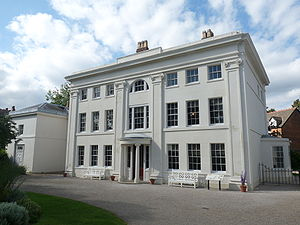
Soho House, a regular meeting site for the society
Lunar Society of Birmingham was a dinner club and informal learned society of prominent figures in the Midlands Enlightenment, including industrialists, natural philosophers and intellectuals, who met regularly between 1765 and 1813 in Birmingham, England. At first called the Lunar Circle, “Lunar Society” became the formal name by 1775. The name arose because the society would meet during the full moon, as the extra light made the journey home easier and safer in the absence of street lighting. The members cheerfully referred to themselves as “lunarticks”, a pun on lunatics. Venues included Erasmus Darwin’s home in Lichfield, Matthew Boulton’s home, Soho House, Bowbridge House in Derbyshire, and Great Barr Hall.
The Lunar Society evolved through various degrees of organisation over a period of up to fifty years, but was only ever an informal group. No constitution, minutes, publications or membership lists survive from any period, and evidence of its existence and activities is found only in the correspondence and notes of those associated with it. Historians therefore disagree on what qualifies as membership of the Lunar Society, who can be considered to have been members, and even when the society can be said to have existed. Josiah Wedgwood, for example, is described by some commentators as being one of five “principal members” of the society, while others consider that he “cannot be recognized as [a] full member” at all. Dates given for the establishment of the society range from “sometime before 1760” to 1775. Some historians argue that it had ceased to exist by 1791; others that it was still operating as late as 1813.
Despite this uncertainty, fourteen individuals have been identified as having verifiably attended Lunar Society meetings regularly over a long period during its most productive eras: these are Matthew Boulton, Erasmus Darwin, Thomas Day, Richard Lovell Edgeworth, Samuel Galton, Jr., James Keir, Joseph Priestley, William Small, Jonathan Stokes, James Watt, Josiah Wedgwood, John Whitehurst and William Withering.
While the society’s meetings provided its name and social focus, however, they were relatively unimportant in its activities, and far more activity and communication took place outside the meetings themselves – members local to Birmingham were in almost daily contact, more distant ones in correspondence at least weekly. A more loosely defined group has therefore been identified over a wider geographical area and longer time period, who attended meetings occasionally and who corresponded or co-operated regularly with multiple other members on group activities. These include Richard Kirwan, John Smeaton, Henry Moyes, John Michell, Pieter Camper, R. E. Raspe, John Baskerville, Thomas Beddoes, John Wyatt, William Thomson, Cyril V. Jackson, Jean-André Deluc, John Wilkinson, John Ash, Samuel More, Robert Bage, James Brindley, Ralph Griffiths, John Roebuck, Thomas Percival, Joseph Black, James Hutton, Benjamin Franklin, Joseph Banks, William Herschel, Daniel Solander, John Warltire, George Fordyce, Alexander Blair, Samuel Parr, Louis Joseph d’Albert d’Ailly, William Emes, the seventh Duke of Chaulnes, Barthélemy Faujas de Saint-Fond, Grossart de Virly, Johann Gottling. and Joseph Wright
This lack of a defined membership has led some historians to criticise a Lunar Society “legend”, leading people to “confuse it and its efforts with the general growth of intellectual and economic activities in the provinces of eighteenth century Britain”. Others have seen this both as real and as one of the society’s main strengths: a paper read at the Science Museum in London in 1963 claimed that “of all the provincial philosophical societies it was the most important, perhaps because it was not merely provincial. All the world came to Soho to meet Boulton, Watt or Small, who were acquainted with the leading men of Science throughout Europe and America. Its essential sociability meant that any might be invited to attend its meetings.”
The origins of the Lunar Society lie in a pattern of friendships that emerged in the late 1750s. Matthew Boulton and Erasmus Darwin met some time between 1757 and 1758, possibly through family connections, as Boulton’s mother’s family were patients of Darwin; or possibly though shared friendships, as both were admirers of the printer John Baskerville and friends of the astronomer and geologist John Michell, a regular visitor to Darwin’s house in Lichfield. Darwin was a physician and poet who had studied at Cambridge and Edinburgh; Boulton had left school at fourteen and started work in his father’s business making metal goods in Birmingham at the age of 21. Despite their different backgrounds they shared a common interest in experiment and invention, and their activities would show Darwin’s theoretical understanding and Boulton’s practical experience to be complementary. Soon they were visiting each other regularly and conducting investigations into scientific subjects such as electricity, meteorology and geology.
Around the same time the Derby-based clockmaker John Whitehurst became a friend, first of Boulton and subsequently of Darwin, through his business supplying clock movements to Boulton’s ormolu manufacturing operation. Although older than both Boulton and Darwin, by 1758 Whitehurst was writing to Boulton telling excitedly of a pyrometer he had built, and looking forward to visiting Birmingham “to spend one day with you in trying all necessary experiments”.
Boulton, Darwin and Whitehurst were in turn introduced by Michell to Benjamin Franklin when he travelled to Birmingham in July 1758 “to improve and increase Acquaintance among Persons of Influence”, and Franklin returned in 1760 to conduct experiments with Boulton on electricity and sound. Although Michell seems to have withdrawn slightly from the group when he moved to Thornhill (near Dewsbury) in 1767, Franklin was to remain a common link among many of the early members.
The outbreak of the French Revolution in 1789 caused political strains between members of the society, but it was the Priestley Riots of 1791 in Birmingham itself that saw a decisive falling off of the society’s spirit and activities. Joseph Priestley himself was driven from the town, leaving England entirely for the United States in 1794, William Withering’s house was invaded by rioters and Matthew Boulton and James Watt had to arm their employees to protect the Soho Manufactory. Lunar meetings were continued by the younger generation of the families of earlier Lunar members, including Gregory Watt, Matthew Robinson Boulton, Thomas Wedgwood and James Watt junior, and possibly Samuel Tertius Galton. Regular meetings are recorded into the nineteenth century – eight in 1800, five or six before August 1801 and at least one in 1802, while as late as 1809 Leonard Horner was describing “the remnant of the Lunar Society” as being “very interesting”. While individual members continued to produce work of importance, however, the collaborative activity that marked the heyday of the society was noticeably absent.
The society had definitely collapsed by 1813, however: in August of that year Samuel Galton, Jr. is recorded as having won a ballot for possession of the scientific books from the society’s library.


Rules for better writing from Genghis Khan
The Rules for Writers
Those who follow me for a long time know that I also write in other fields aside from Regency Romance and the historical novels I do.
A little while ago, before the end of 2011 and the 2011 NaNoWriMo, (where I wrote the first draft of another Regency) I started work on a project about writing.
The premise was what one should think about when starting and working on a project. I came up with 10 rules to follow in a quest to become a writer and tackle that novel.
Here are The 10 Rules:
1) Read like a writer
2) Have a good story
3) Your work will be Thematic
4) Plot: The seven deadly ones
5) Characters will carry your tale, near and far
6) Words are your warriors
7) Stories are structured
8) All tales building to a Crescendo
9) Genghis edits history, shouldn’t you as well
10) Act like a writer
So it is now released. For $4.99 you can get this treatise on honing your skills.
Barnes and Noble for your Nook
Genghis Khan came from the Steppes of Mongolia, a family torn apart by neighboring tribes, to unite those tribes, or defeat them, and then conquer the greater part of the known world. His heirs would continue his conquest right to the edge of western society. The world feared the Mongols, and Genghis. Now, you can benefit, as a writer from the lessons he has to impart on how, with the changing world of publishing, you can perfect your work and write not only good material for this new age of book publishing. But can write great work for this new age. 10 simple lessons, and you will be on your way to conquering the bookshelves of the 21st century. This short book will have you learning all you really need to know to elevate your writing to the next level. These simple lessons will start you on the road to better writing as a member of the Horde in no time.
Feedback
If you have any commentary, thoughts, ideas about the book (especially if you buy it, read it and like it
September 8, 2016
Regency Personalities Series-Sir Abraham Hume 2nd Baronet
Regency Personalities Series
In my attempts to provide us with the details of the Regency, today I continue with one of the many period notables.
Sir Abraham Hume 2nd Baronet
29 February 1749 – 24 March 1838
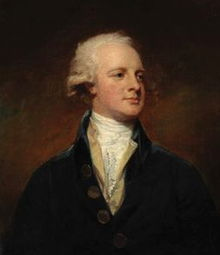
Abraham Hume
Sir Abraham Hume 2nd Baronet was a British floriculturist and Tory politician.
He married Amelia Egerton, daughter of John Egerton, Bishop of Durham.
He was appointed High Sheriff of Hertfordshire for 1774 and also elected at the 1774 general election as a Member of Parliament (MP) for the borough of Petersfield in Hampshire, and holding the seat until the 1780 general election, when he did not contest Petersfield again.
He was returned to the House of Commons 27 years later, at the 1807 general election as an MP for the borough of Hastings in Sussex. He resigned the seat in early 1812 in order to contest a by-election in Boston, where he was defeated in April 1812, and was then re-elected for Hastings at a by-election later the same month. At the 1812 general election, he contested both Boston and Hastings, but was elected only in the latter, and held that seat until the 1818 general election, when he contested neither Boston nor Hastings.
Both Sir Abraham Hume and his wife were active as rosarians and developed several rose cultivars at their estate in Hertfordshire. He was elected a Fellow of the Royal Society in December 1775, and one of the founding members of the Geological Society and the British Institution.
He was a keen art collector, especially of Old Master prints and drawings (drawings by Polidoro da Caravaggio were a particular favourite). He was friends with Sir Joshua Reynolds who left him in his will a small painting by Claude Lorrain, now in the Metropolitan Museum of Art, New York.
They had issue:
Amelia Hume (21 January 1772 – 15 January 1837)
Amelia Sophia Hume (31 July 1788 – 21 February 1814)


An Unofficial Guide to how to win the Scenarios of Rollercoaster Tycoon 3
An Unofficial Guide to how to win the Scenarios of Rollercoaster Tycoon 3
I have been a fan of this series of computer games since early in its release of the very first game. That game was done by one programmer, Chris Sawyer, and it was the first I recall of an internet hit. Websites were put up in dedication to this game where people showed off their creations, based on real amusement parks. These sites were funded by individuals, an expense that was not necessarily as cheap then as it is now. Nor as easy to program then as it might be to build a web page now.
Prima Books released game guides for each iteration of the game, Rollercoaster Tycoon 1, Rollercoaster Tycoon 2 and Rollercoaster Tycoon 3 (RCT3) but not for the expansion sets. And unlike the first two works, the third guide was riddle with incorrect solutions. As I played the game that frustrated me. And I took to the forums that Atari, the game publisher hosted to see if I could find a way to solve those scenarios that the Prima Guide had written up in error. Not finding any good advice, I created my own for the scenarios that the “Official” Guide had gotten wrong.
Solutions that if you followed my advice you would win the scenario and move on. But if you followed the
“Official” version you would fail and not be able to complete the game. My style and format being different than the folks at Prima, I continued for all the Scenarios that they had gotten right as well, though my solutions cut to the chase and got you to the winner’s circle more quickly, more directly.
My contributions to the “Official” Forum, got me a place as a playtester for both expansions to the game, Soaked and Wild. And for each of these games, I wrote the guides during the play testing phase so all the play testers could solve the scenarios, and then once again after the official release to make changes in the formula in case our aiding to perfect the game had changed matters. For this, Atari and Frontier (the actual programmers of the game) placed me within the game itself.
And for the longest time, these have been free at the “Official” Forums, as well as my own website dedicated to the game. But a short time ago, I noticed that Atari, after one of its bankruptcies had deleted their forums. So now I am releasing the Guide for one and all. I have added new material and it is near 100 pages, just for the first of the three games. It is available for the Kindle at present for $2.99.
(Click on the picture to purchase)
Not only are all 18 Scenarios covered, but there are sections covering every Cheat Code, Custom Scenery, the famous Small Park Competition, the Advanced Fireworks Editor, the Flying Camera Route Editor which are all the techniques every amusement park designer needs to make a fantastic park in Rollercoaster Tycoon 3.
Scenarios for RCT 3
1) Vanilla Hills
2) Goldrush
3) Checkered Flag
4) Box Office
5) Fright Night
6) Go With The Flow
7) Broom Lake
8) Valley of Kings
9) Gunslinger
10) Ghost Town
11) National Treasure
12) New Blood
13) Island Hopping
14) Cosmic Crags
15) La La Land
16) Mountain Rescue
17) The Money Pit
18) Paradise Island


September 7, 2016
Regency Personalities Series-Edward Whitaker Gray
Regency Personalities Series
In my attempts to provide us with the details of the Regency, today I continue with one of the many period notables.
Edward Whitaker Gray
21 March 1748 – 27 December 1806
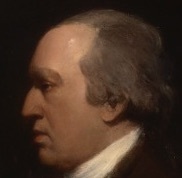
Edward Whitaker Gray
Edward Whitaker Gray while attending the College of Physicians he performed the duties of librarian. He became a licentiate in 1773. He graduated M.D., and ultimately was assigned as keeper of the departments of Natural history and antiquities in the British Museum, which consisted of the collection purchased from Sir Hans Sloane on his passing in 1753. This role he held from 1778 until his death. During his tenure, he reorganized the natural history collections employing the Linnæan system. George Shaw assumed his duties as keeper in 1807 having assisted since 1791.
Within zoology, his Catalogue of Shells for the British Museum (1791) best reflect his work as a malacologist.
He introduced two plants, Hexandria monogynia, native to Brazil, and Hexandria monogynia, native to Portugal, shipped from Oporto, and catalogued (1777) in the Royal Botanical gardens at Kew. He was one of the original associates of the Linnean Society in 1788.
In 1785 and 1786 he delivered Croonian Lectures on topics related to muscle response, and in 1789 he contributed Observations on the … Amphibia to the Philosophical Transactions of the Royal Society, of which he was a fellow (elected Feb. 1779), and of which on St. Andrew’s day in 1797 he became the junior secretary. His 1807 successor to this secretarial post was Sir Humphry Davy, future mentor to Michael Faraday.
He died at the British Museum, 27 Dec. 1806, in his fifty-ninth year of age.
He married Elizabeth Bearsley on 6 June 1775 in Oporto, Portugal. By her he had three children. His two daughters, Juliana and Elizabeth, were both christened in Portugal. The younger daughter married in 1808 Taylor Combe, who subsequently assumed the junior secretarial role for the Royal Society. His son, Francis Edward Gray died on 3 January 1814 at Oporto, 29 years of age.
Observations on the manner in which glass is charged and discharged with the electric fluid. – LXXVIII. 121
Observations on the class of animals called by Linnæus amphibia; particularly on the means of distinguishing those serpents which are venomous from those which are not so. – LXXIX. 21
Account of an earthquake felt in various parts of England, 18 November 1795, with some observations thereon. – LXXXVI. 353
Catalogue of plants found in the neighbourhood of Newbury (published by Hall & Marsh 1839).
Catalogue of shells bequeathed to the British Museum by the Rev. Clayton Mordaunt Cracherode, A.M. (published 1801).



